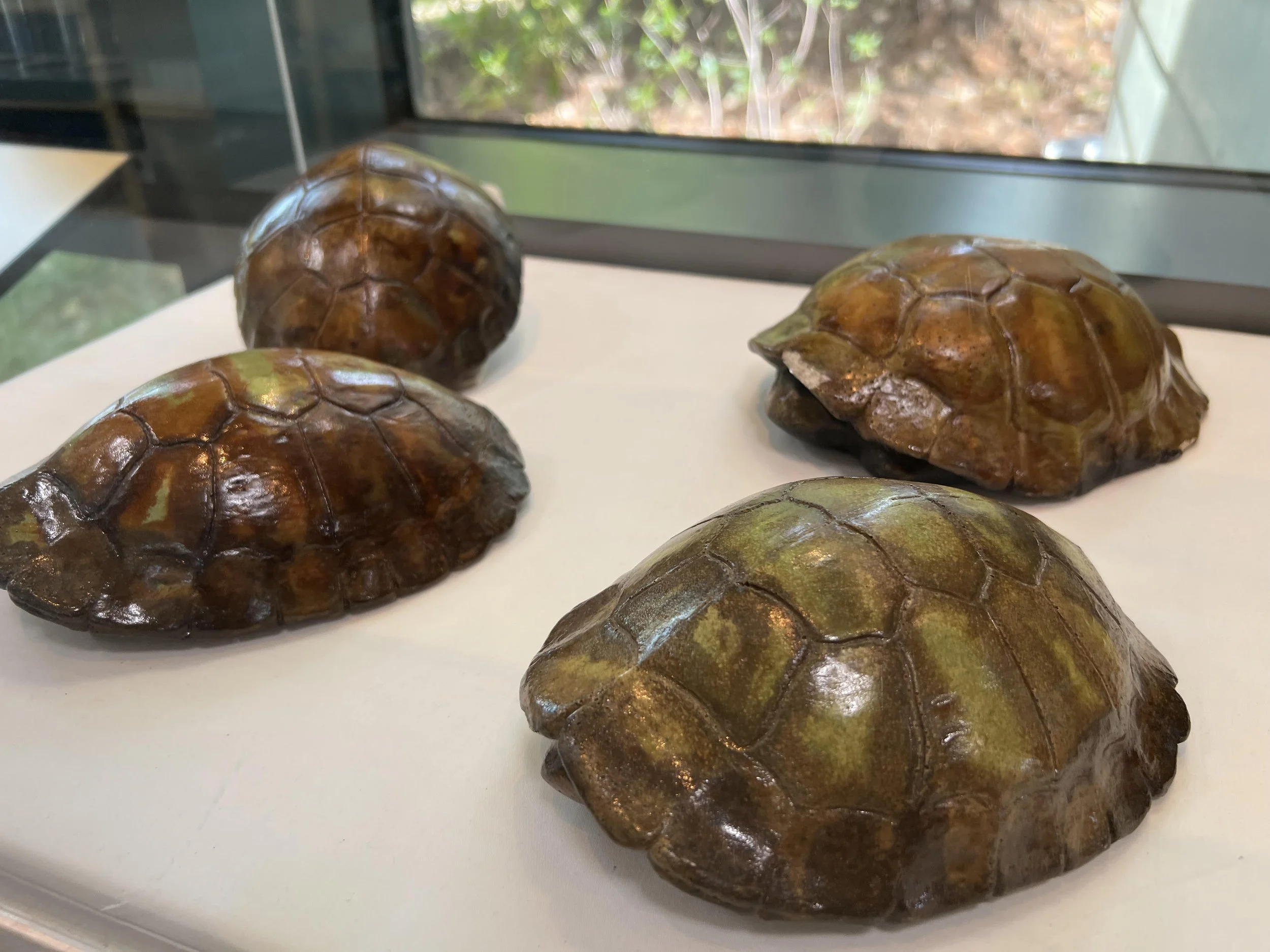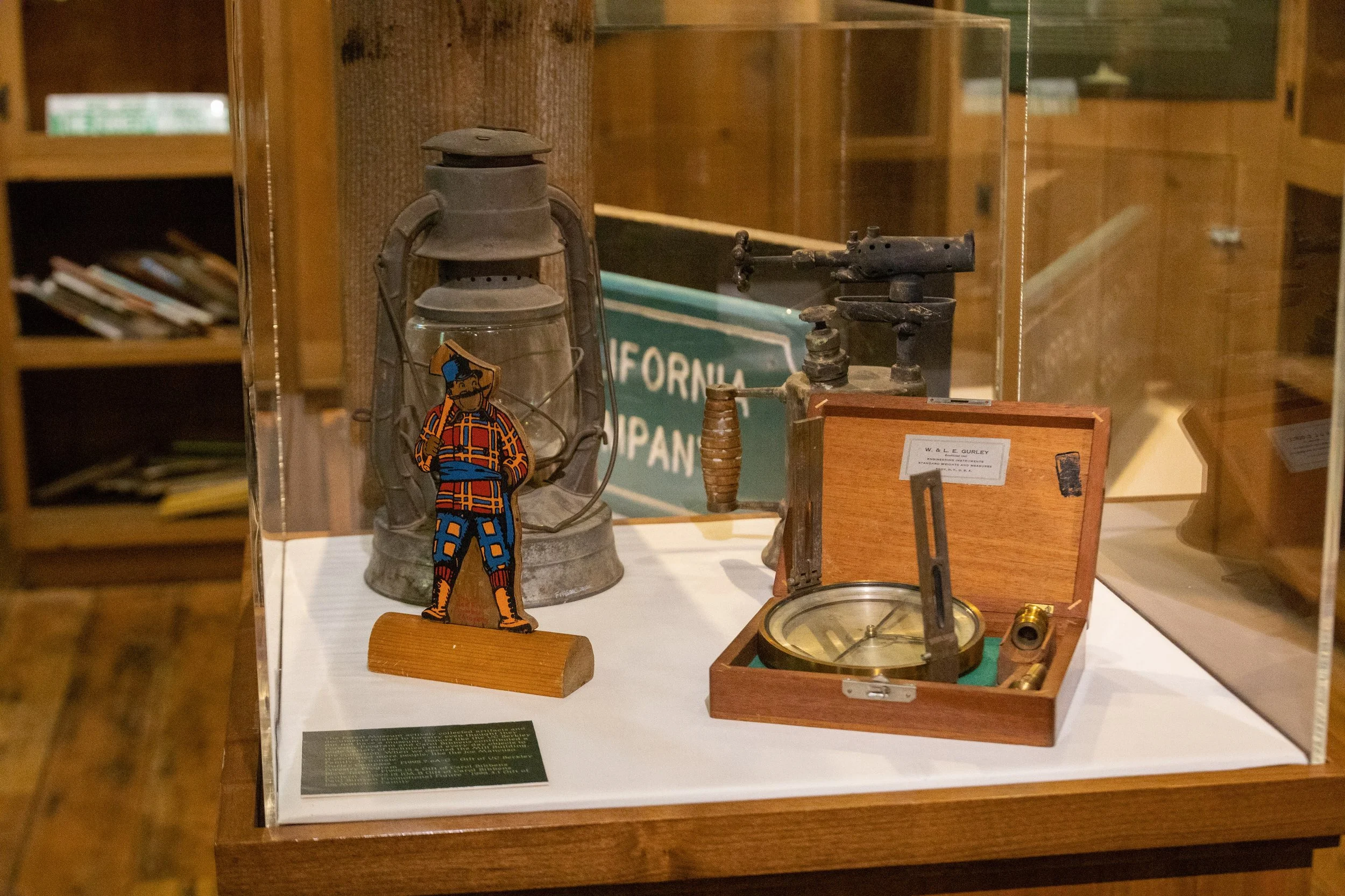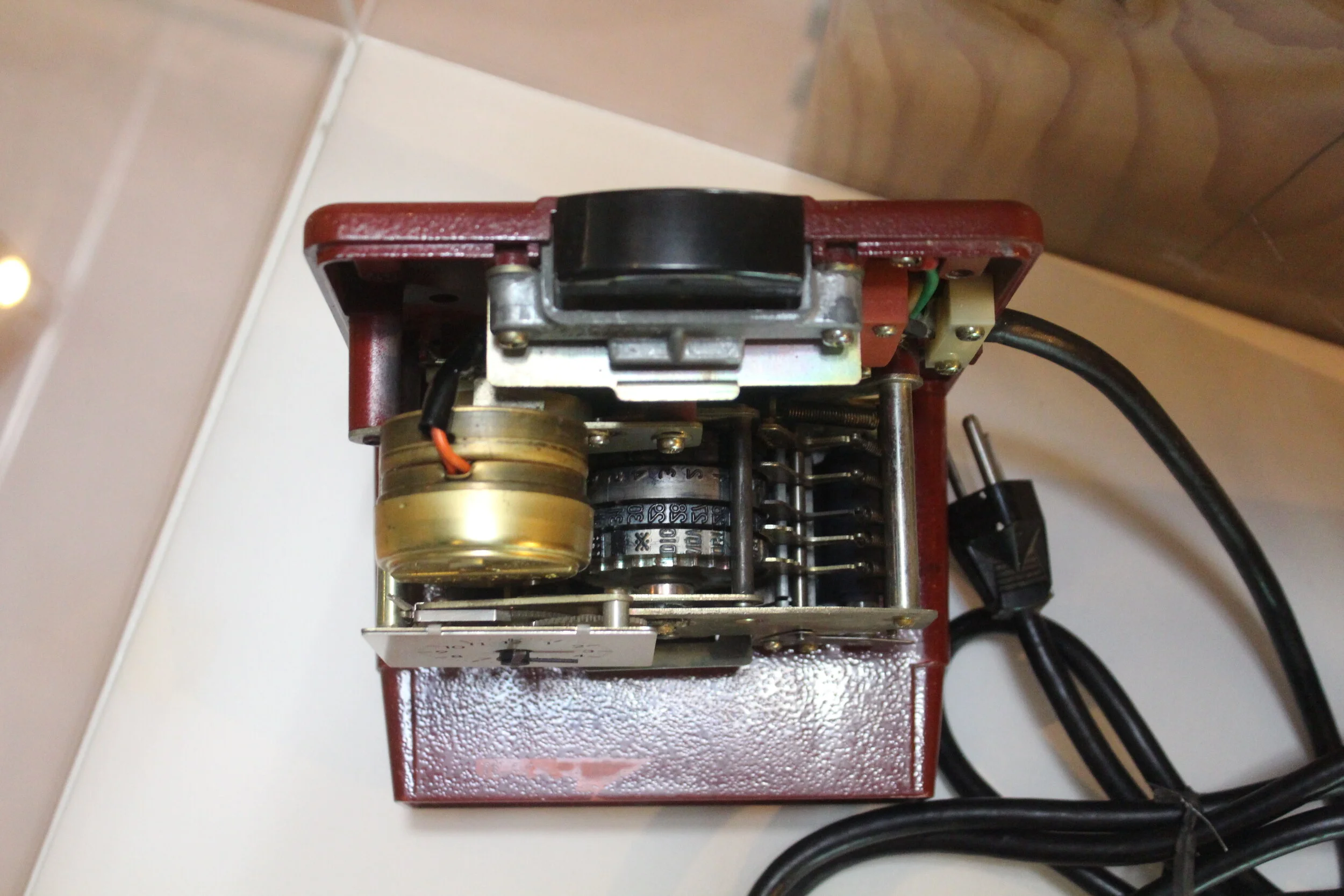We are excited to share these beautiful, green, glistening maquettes in honor of the Museum’s 20th Anniversary! Much has changed at Turtle Bay Exploration Park since these very first Public Artworks were commissioned!
Created by Troy Corliss for the opening of the Visitor Center in 2000, these maquettes, or models, are small versions of larger sculptures that now reside at the West Entrance of the Botanical Gardens and are simply and officially designated “The Turtle Sculpture”. Troy was commissioned by what was then called “Turtle Bay Museums and Arboretum on the River” to design a turtle sculpture to greet guests.

























